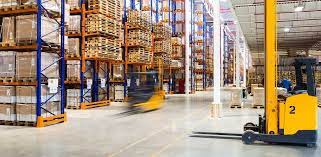Not everyone is cut out for warehouse jobs, where the hours can be long, the pay decent and the temperature slightly hotter than the outside.
Every day at 8 am, 21-year-old Pooja Das passes through the security check at the entry of the warehouse before getting in to start her nine-hour shift.
Away from the hubbub of Bengaluru city, this 48,000 square foot warehouse is located in KR Puram. Das is from Assam and has worked as a contractual employee for over a year now. She earns Rs 300 a day and gets 14 days of leave in a year.
Das says she joined the warehouse because her older sister, who is on the payrolls, has worked here for three years and now earns over Rs 20,000 a month, which is quite aspirational for her. However, visiting home, even once a year, is still a dream for the two sisters.
Workers like Das (a pseudonym to protect her identity) have mostly passed class 12 or are graduates. They are trained over a few days – sometimes weeks – before starting on the job.
During festive sales and other peak shopping times, these workers typically earn up to Rs 15,000 per month in a city like Bengaluru or New Delhi after long hours on the job.
This year, goods worth $4.6 billion were sold during the first week of the online festive sales, a 23 percent year-on-year increase, according to a report by RedSeer Management Consulting. The number of online shoppers grew by 20 percent, with about 40 million people from Tier II+ cities.
Inside warehouses
“You may have an MBA, but you may not be cut out for a warehouse job,” said Suraj Narang, assistant manager at Increff, which offers merchandise planning, allocation, and warehousing solutions.
Here’s why.
Warehouses are 3-4 degrees hotter inside than the outside environment. Workers are on their feet for 8-9 hours in front of their systems completing their tasks or moving packages around.
In a day, 1-2 percent of the inventory is prepared for delivery to stores or consumers. Each worker is required to register 3,500-5,000 items a day on the system to make them saleable merchandise from 500,000-700,000 fashion items stored. All counters are under surveillance through CCTV cameras to avoid conflicts later.
In some high-end warehouses, turbofans or standing fans offer the only respite for workers. The conditions inside warehouses can differ depending on their category.
In New Delhi, Mumbai or Kolkata, which are major warehouse hubs, hydrating workers and providing adequate support becomes a basic necessity.
The daily work in a warehouse includes making products saleable within a day, segregating packages and getting deliveries ready. After a product goes live on the website and an order is received, the item is sent for packaging, bundled with other products if required, and kept ready for the delivery partner.
Some warehouses are paperless and rely only on tech-based solutions to avoid human error. Many follow a hybrid model of technology and paperwork.
Das and her sister are not the only women working in the warehouse. It has about 80 such gig workers and boasts of more young women joining up than men despite a strict working environment and long working hours when demand goes up.
The reason is that girls find it a respectable and safe workplace with decent earnings compared to jobs such as delivering food, couriers or driving cabs.
Rising demand
After the outbreak of the pandemic, warehouses were shut for over a month and many workers returned to their hometowns. But soon, demand tripled as offline and traditional brands expanded into the online space.
Demand increases during festive season sales and warehouses typically supplement the workforce with temporary staff who may be let go as the shopping eases. Warehouses usually let go 20-40 percent of the workers who are hired on short-term contracts. Most of them work on farms or in other odd jobs from towns and villages nearby.
“Over the years, these workers have also understood the sale or festive cycle and accordingly they also get in touch with third-party hiring agencies,” said Jayant Mahto, cofounder of Glaucus Supply Chain Solutions.
Warehouses cater to both B2B and B2C segments and demand does not always drop entirely, allowing workers to be reassigned.
“To set up a warehouse, the minimum cost is Rs 2-3 crore. Rent for one warehouse block is usually between Rs 5-7 lakh, along with expenses like electricity, management and other miscellaneous expenses,” said Narang of Increff. He said with the increase in demand for warehouses, landowners on the outskirts of cities find it a very lucrative business model.
Mahto said that given the large land and worker requirements, warehouses in most cities tend to be concentrated in semi-urban and rural areas, where the cost of living and land prices are lower. This makes it easy to find migrant and rural workers along with comparatively low rent. Glaucus Supply Chain Solutions operates more than 15 warehouses across metro cities with over 800 employees.
Micro-warehouses
While metro cities have so far been warehouse hubs, apart from those operated by Amazon and Walmart-owned Flipkart in the smaller cities, D2C and other brands have started operating through third-party logistics warehouses and micro-warehouses.Experts said micro-warehouses work like dark stores, which are not open to retail buyers. They are more in demand from D2C and smaller brands as it helps them to fulfil orders faster.
Although the sizes of micro-warehouses vary depending on the application, objectives, and volumes handled, they typically store about 1,500 items from a mix of brands.
With D2C brands seeing more traction, demand to cater to these brands is also rising. Mahto said Glaucus is onboarding 10 D2C clients in the next two months.
Saurav Chachan, engagement manager at RedSeer, said the intent to increase the number of warehouses, especially in the smaller cities, is to speed up delivery.
“As the marketplaces deliver the same day or next day, the D2C brands also face the pressure and hence the inventory is distributed pan-India,” Chachan said. According to RedSeer’s report, delivery time was reduced by about five hours during the festive sales this year.Currently, the challenges that warehouses typically deal with are product returns and unsold inventory. While most returned goods are in the fashion category – at 22-40 percent – there are fewer products returned in categories such as electronics. When inventory is unsold, products are sent over to stores in smaller towns and cities or in-season sales. If still not sold, the products are repurposed and processed again.





































